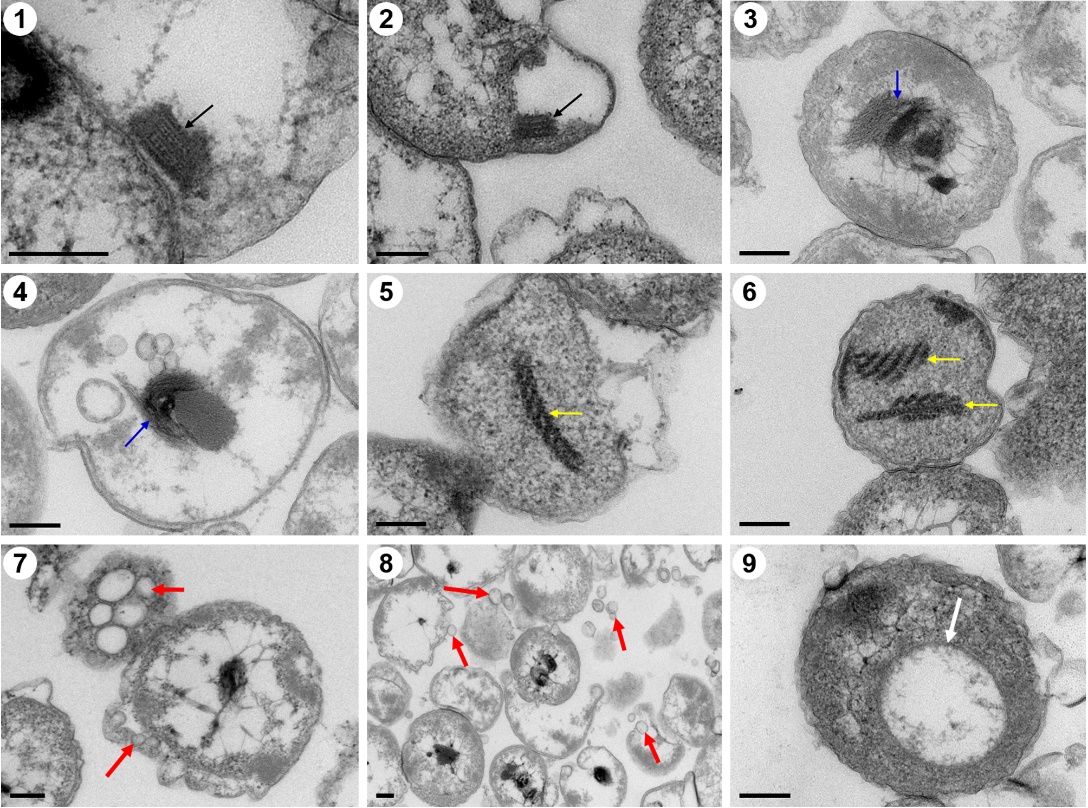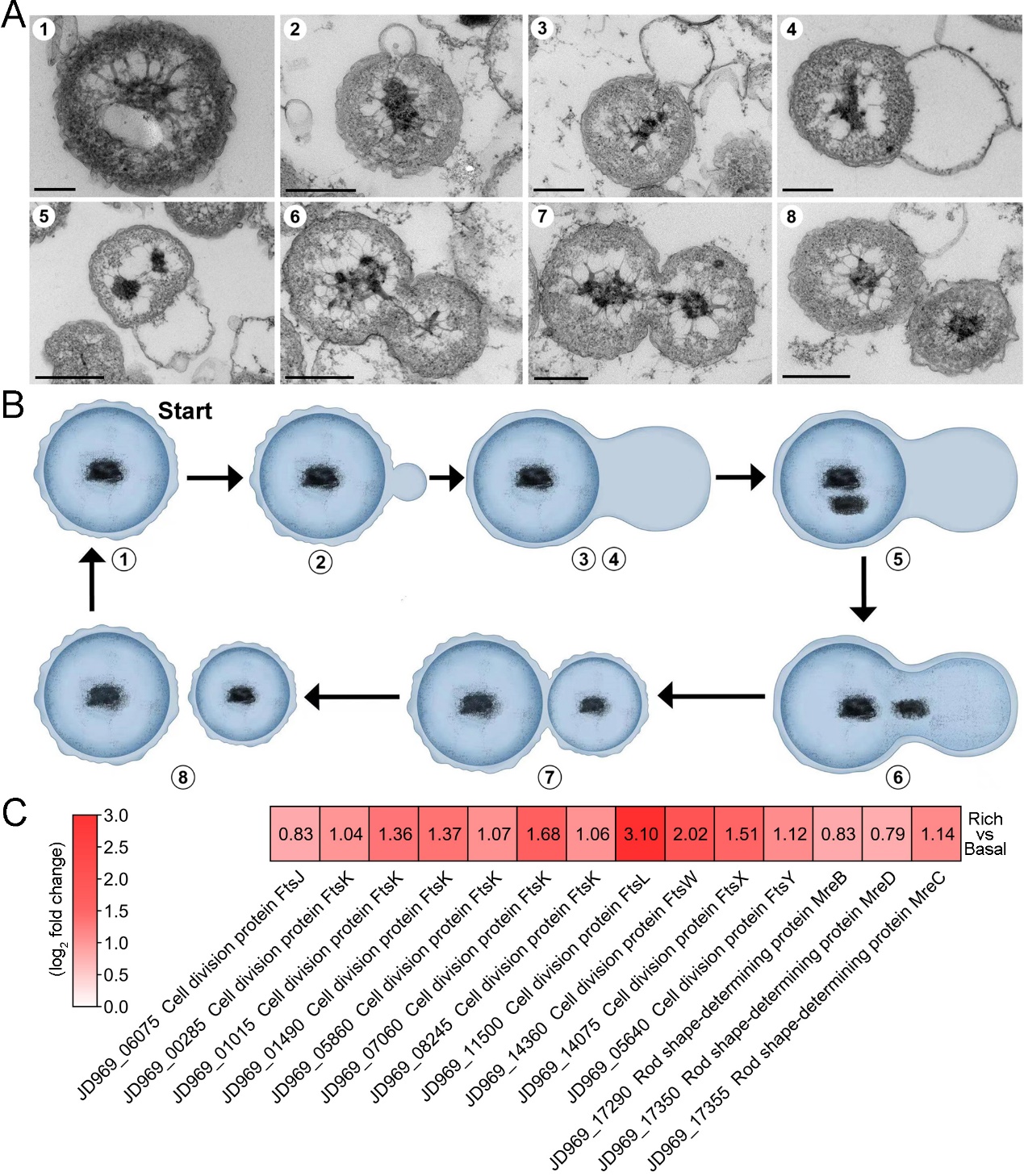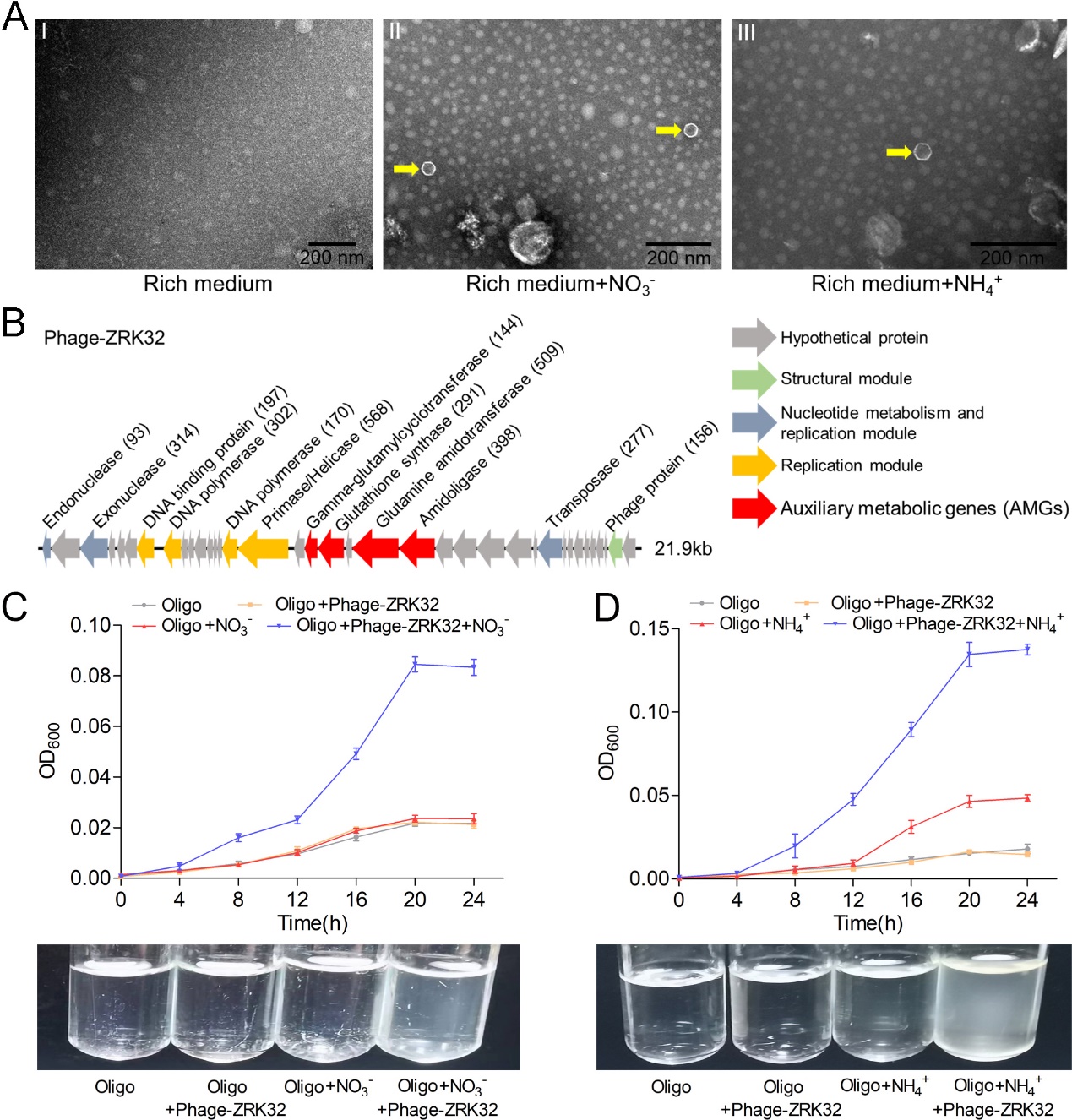
Planctomycetes bacteria have a complex internal cell structure: some have tight chromatin surrounded by a membrane, others contain structures similar to eukaryotic organelles. They are widely distributed in various ecosystems on Earth, especially in many deep-sea habitats (cold seeps, hydrothermal vents, abysses, seamounts, etc.), but it is difficult to obtain the pure culture, especially anaerobic Planctomycetes strains.
A research team led by Prof. SUN Chaomin from the Institute of Oceanology of the Chinese Academy of Sciences (IOCAS) has cultured the first strictly anaerobic Planctomycetes bacterium from the deep-sea cold seeps and revealed its unique division pattern and nitrogen metabolism characteristics.
The study was published in eLife on Jan. 24.
In this study, the researchers isolated the novel Planctomycetes bacterium (named Poriferisphaera heterotrophicis ZRK32) from deep-sea cold seep sediments using a unique enrichment and separation strategy. They found that N-acetylglucosamine did not promote the growth of ZRK32, but rich organic nutrients could effectively promote its growth, which is very different from the metabolic characteristics of aerobic Planctomycetes bacteria previously reported to prefer N-acetylglucosamine or oligotrophic medium.
It is worth mentioning that strain ZRK32 is divided through a budding manner, and it possesses some structures similar to eukaryotic organelles, such as golgi apparatus, endoplasmic reticulum, vesicles, etc. These unique eukaryote-like structures provide good material for further studies on the transition from prokaryotes to eukaryotes.
"In addition, we found that nitrate can be converted into ammonia and then glutamate into the tricarboxylic acid cycle process to generate energy, and ultimately promote the growth of strain ZRK32, while nitrite inhibits its growth," said Dr. ZHENG Rikuan, first author of the study.
The researchers accidentally found that nitrate and ammonium can induce strain ZRK32 to produce chronic phages, which do not lyse the host cell and form a symbiotic relationship with the host. These chronic phages can also participate in the nitrogen metabolism of strain ZRK32 and produce glutamate through their own auxiliary metabolic genes. This is consistent with previous findings by Prof. SUN's team that chronic phages can assist a deep-sea Tenericutes bacterium in metabolizing nucleic acids (mBio, 2023).
"These results indicate that there is not only a hostile relationship between bacteriophages and their hosts, but also a mutualism and symbiosis relationship in the deep-sea extreme environments, suggesting the existence of many unknown unique life processes in deep-sea microorganisms that are difficult to cultivate," said Prof. SUN.
This work was supported by the Major Research Plan of the National Natural Science Foundation of China, the NSFC Innovative Group Grant, and the Shandong Provincial Natural Science Foundation, etc.

Ultrathin TEM sections showing some eukaryote-like structures in cells of P. heterotrophicis ZRK32. (Image by ZHENG Rikuan)

The unique cell division manner performed by P. heterotrophicis ZRK32. (Image by ZHENG Rikuan)

TEM observation and functional assay of the chronic bacteriophage induced by NO3- or NH4+ from P. heterotrophicis ZRK32. (Image by ZHENG Rikuan)

86-10-68597521 (day)
86-10-68597289 (night)

52 Sanlihe Rd., Xicheng District,
Beijing, China (100864)

